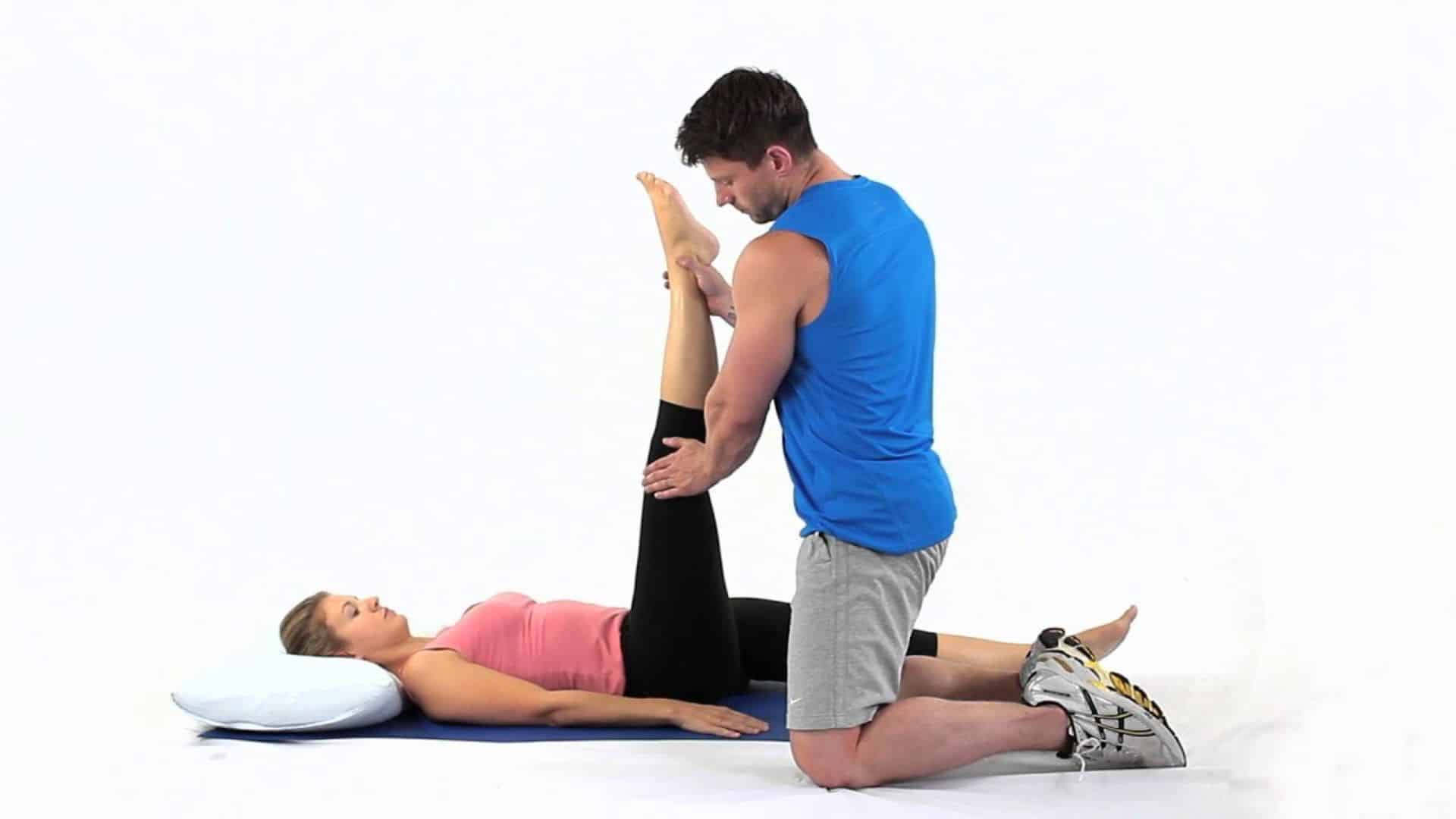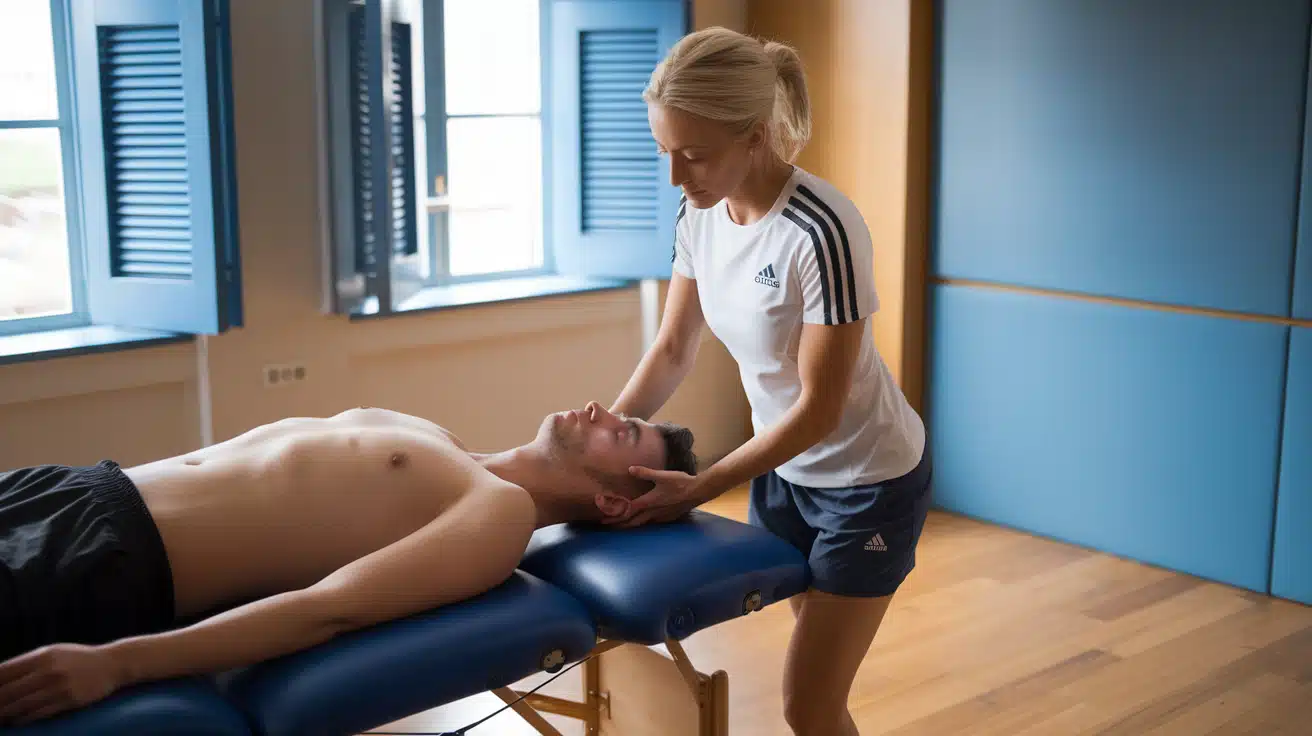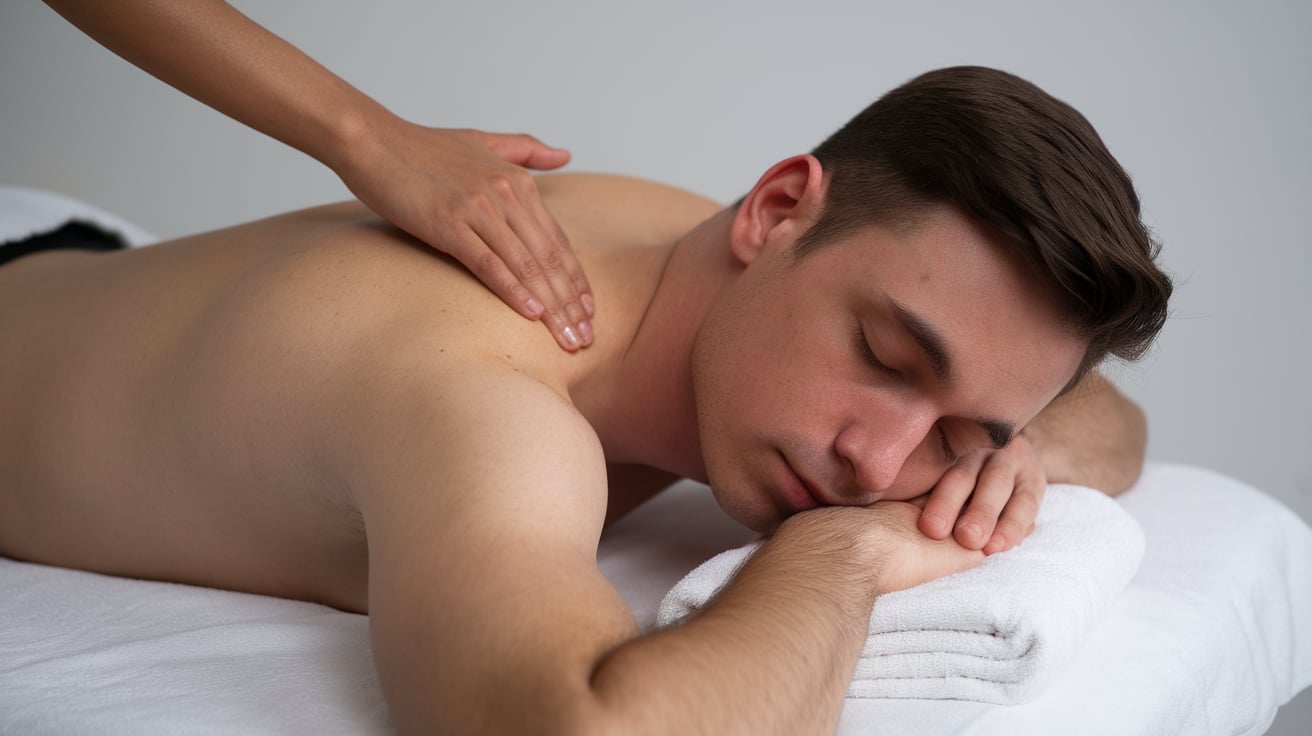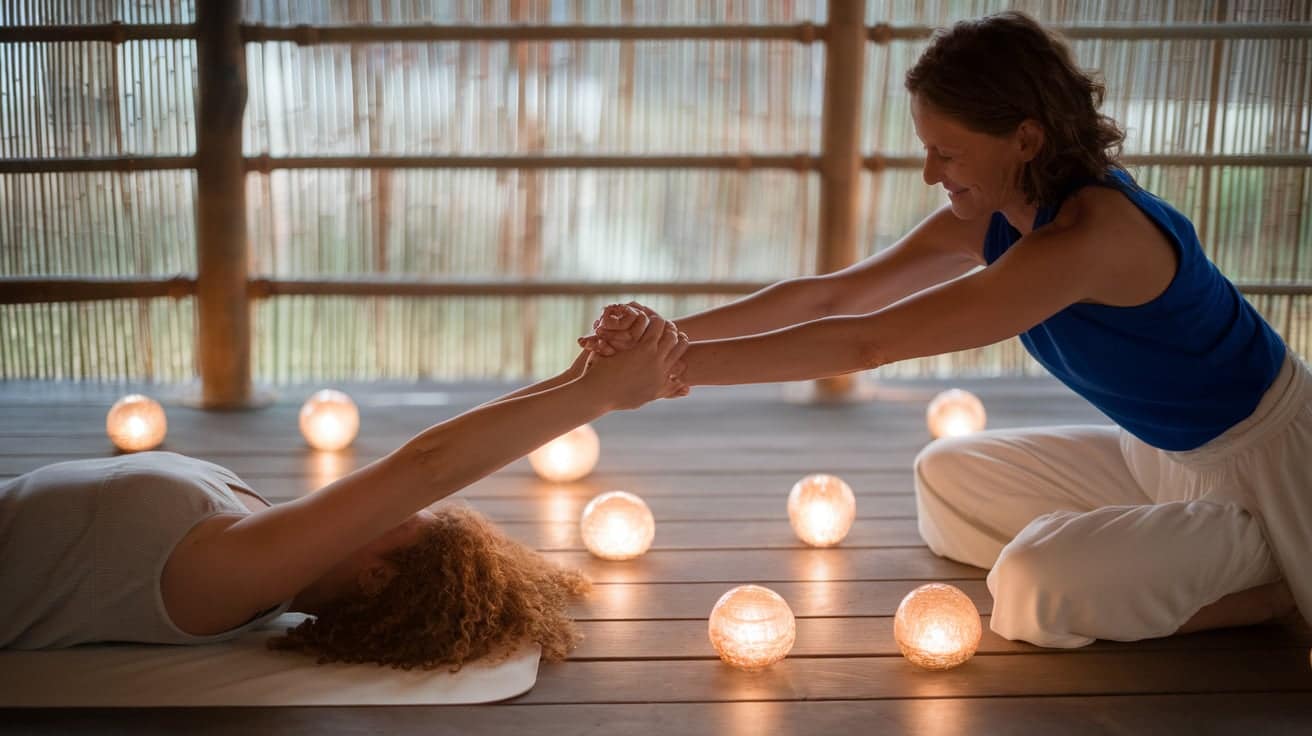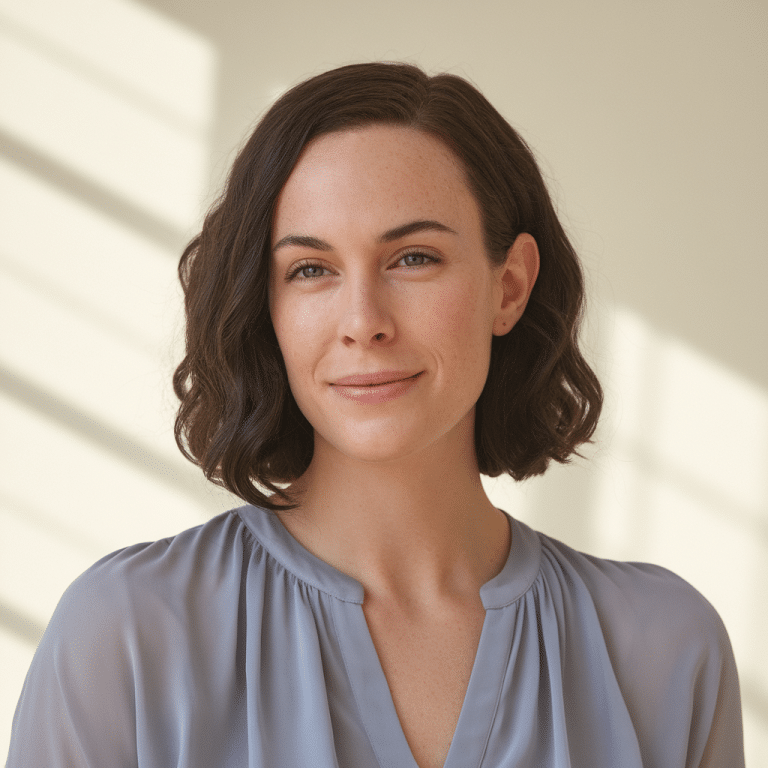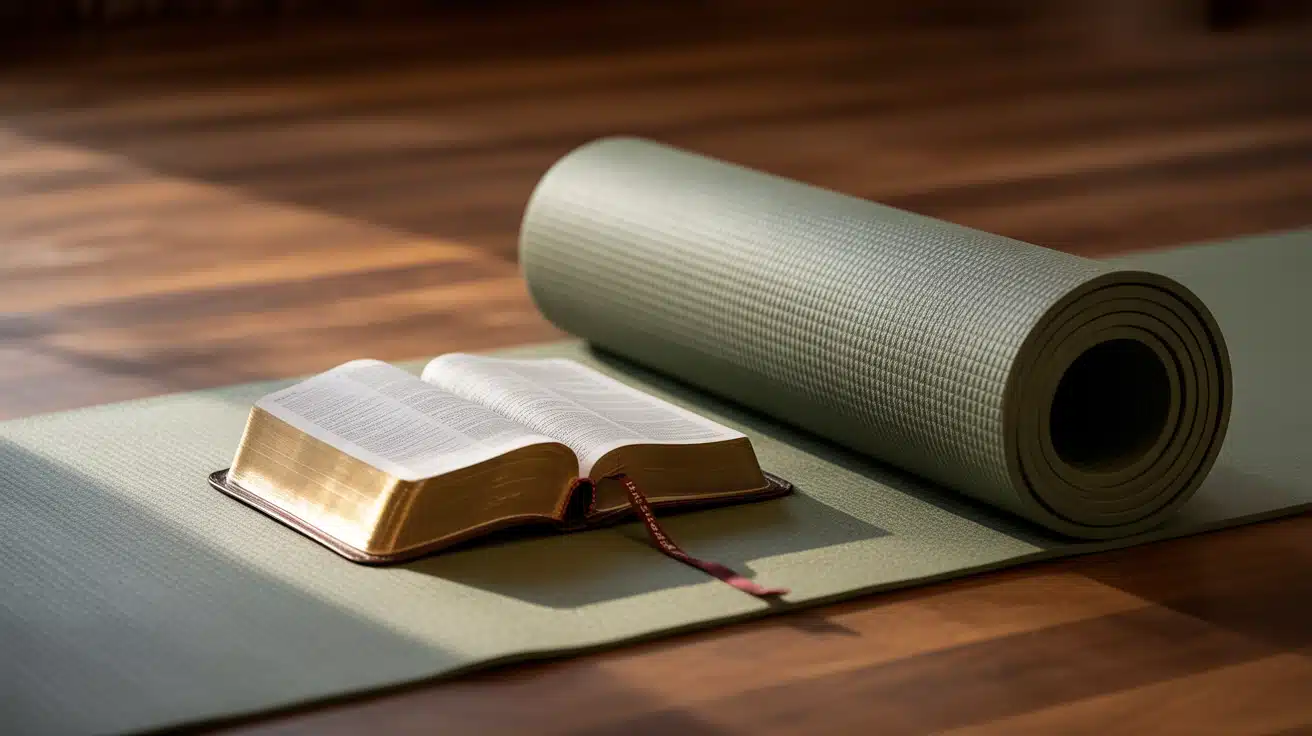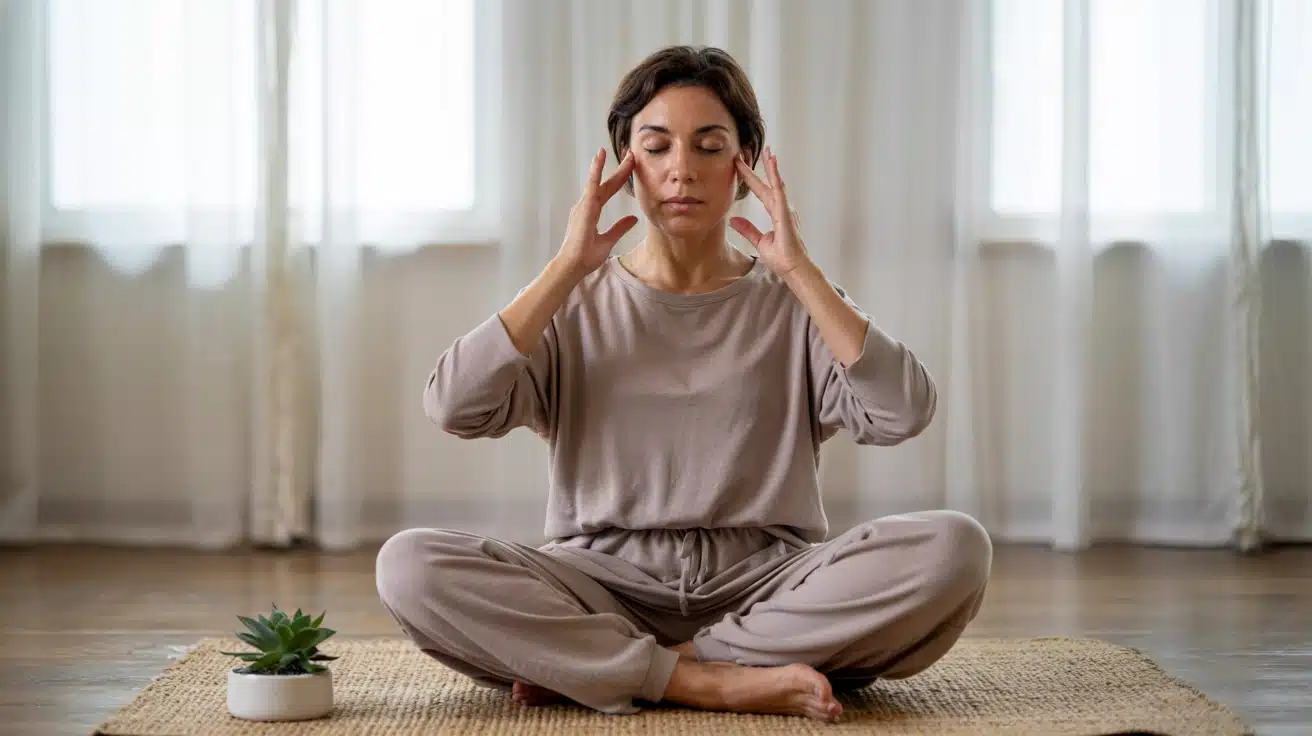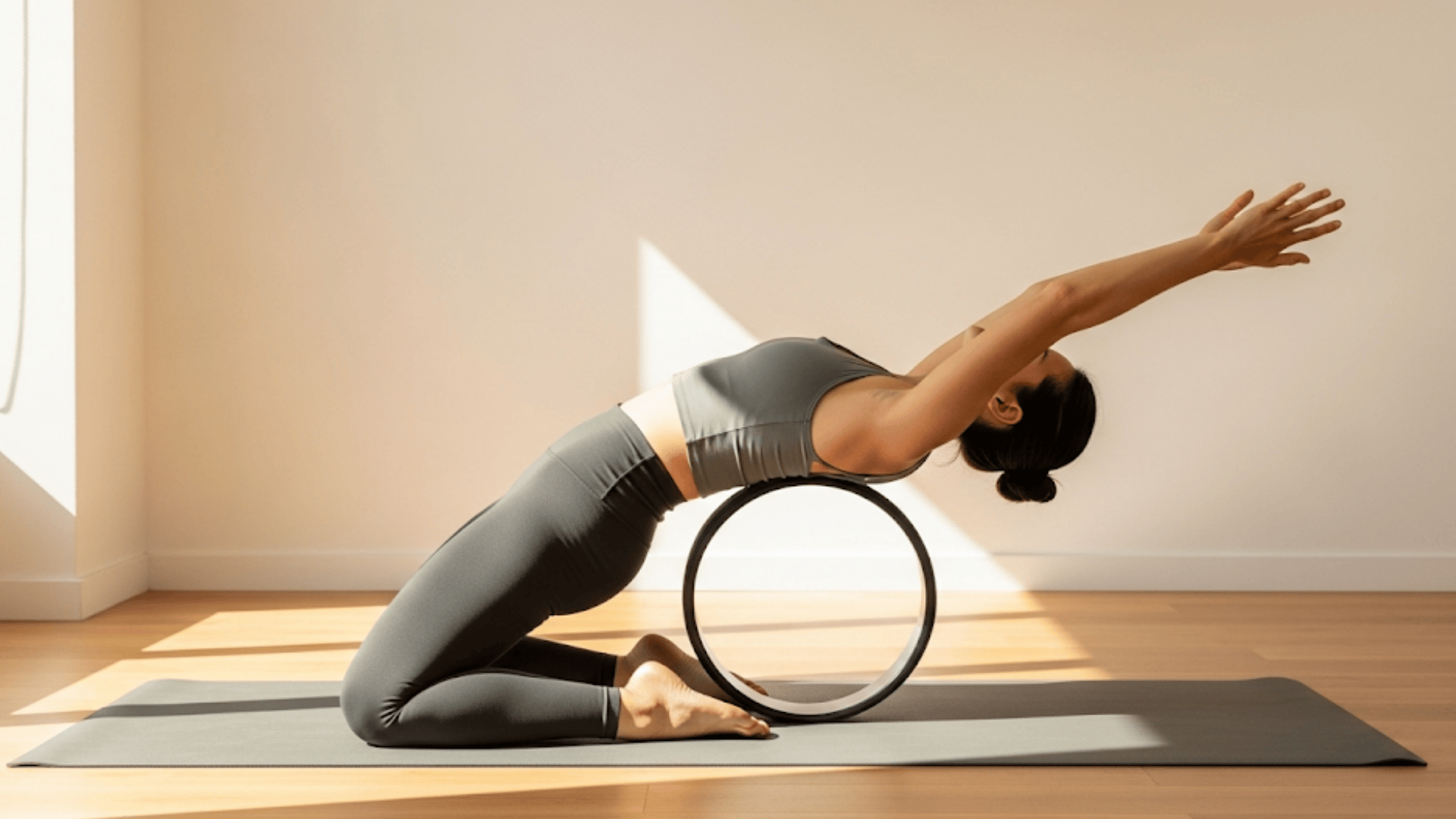I know how frustrating it feels when your muscles stay tight no matter how much you stretch at home. You roll out of bed with that familiar ache in your back, or your shoulders feel like concrete blocks after a long day at work.
However, here’s something that might change everything for you: stretching massage therapy combines the best of both worlds.
This specialized treatment doesn’t just knead your muscles; it actively moves your body through guided stretches while applying therapeutic pressure.
I’ve seen firsthand how this approach helps people regain mobility they thought was gone forever. The results speak for themselves: better flexibility, less pain, and that feeling of freedom in your body you’ve been missing.
Ready to learn how stretching massage can enhance your relationship with movement and alleviate pain?
What Is Massage Therapy Stretching?
Massage therapy stretching combines the therapeutic benefits of professional massage with targeted stretching techniques to enhance flexibility, alleviate muscle tension, and promote overall well-being.
This specialized treatment involves a licensed massage therapist applying manual pressure to muscles while guiding the client through specific stretches.
Key Characteristics of Massage Therapy Stretching Include
- Active participation – Clients work with the therapist to perform movements rather than remaining passive
- Muscle preparation – Massage warms up tissues before stretching, making movements safer and more effective
- Targeted relief – Focuses on specific problem areas like tight shoulders, lower back pain, or restricted hip mobility
- Improved range of motion – Regular sessions help restore natural movement patterns and joint flexibility
- Pain reduction – Combines pressure point therapy with gentle stretching to release chronic tension.
- Personalized approach – Therapists adjust techniques based on individual needs and physical limitations
The treatment typically begins with a traditional massage to relax the muscles, followed by assisted stretching, where the therapist helps move the joints through their full range of motion.
This method is particularly beneficial for athletes, office workers, and anyone experiencing muscle stiffness or mobility issues.
Sessions typically last 60-90 minutes and can complement regular massage therapy or be used as a standalone treatment.
Top Benefits of Massage Therapy and Stretching
Massage therapy stretching offers numerous advantages that go beyond traditional massage or stretching alone.
This combined approach addresses multiple aspects of physical wellness, making it an effective treatment for various conditions and lifestyle needs.
1. Physical Performance Enhancement
Regular massage therapy stretching sessions significantly improve athletic performance by increasing flexibility, reducing muscle stiffness, and preventing injuries that commonly occur during intense physical activities or sports.
2. Pain Relief and Management
This treatment effectively reduces chronic pain conditions such as lower back pain, neck tension, and muscle knots by combining deep tissue work with targeted stretching movements.
3. Improved Circulation and Blood Flow
The combination of massage pressure and stretching movements stimulates blood circulation throughout the body, delivering oxygen and nutrients to muscles while removing metabolic waste products efficiently.
4. Stress Reduction and Mental Wellness
Sessions promote relaxation by releasing endorphins and reducing cortisol levels, helping clients manage daily stress while improving overall mental health and emotional well-being through therapeutic touch.
5. Enhanced Range of Motion
Regular treatments help restore natural joint mobility and muscle flexibility, making daily activities easier and reducing the risk of future injuries from restricted movement patterns.
Massage Therapy Stretching Techniques
Massage therapy stretching uses specialized techniques that combine manual pressure with guided movements to improve flexibility and reduce muscle tension.
These methods range from passive stretching to active participation techniques, each designed to target specific areas and enhance overall mobility.
1. Passive Stretching with Manual Assistance
In this technique, the massage therapist moves the client’s limbs through their full range of motion while the client remains completely relaxed.
The therapist controls the movement speed and intensity, making it ideal for people with limited mobility or those recovering from injuries.
2. Active Isolated Stretching (AIS)
This method involves holding stretches for only 2-3 seconds before releasing, then repeating the movement multiple times.
The therapist assists the client in reaching optimal stretch positions while maintaining proper breathing patterns, preventing muscle fatigue, and promoting better flexibility gains.
3. Proprioceptive Neuromuscular Facilitation (PNF)
PNF stretching combines muscle contraction with relaxation phases. The client contracts the target muscle against the therapist’s resistance for 5-10 seconds, then relaxes while the therapist guides them into a deeper stretch position, effectively reprogramming muscle memory.
4. Myofascial Release with Movement
This technique targets the fascia surrounding muscles by applying sustained pressure while guiding the client through specific movements. The therapist uses hands, elbows, or tools to release fascial restrictions while incorporating stretching motions to restore tissue mobility and function.
5. Joint Mobilization Techniques
These techniques focus on improving joint movement by applying gentle pressure and movement to specific joints while stretching surrounding muscles.
The therapist manipulates joints through their natural range of motion to reduce stiffness and restore proper alignment and function.
6. Thai Massage Stretching
Combining yoga-like postures with massage pressure, this technique involves the therapist using their body weight to guide clients through various stretching positions.
The client remains clothed while experiencing deep stretches that improve flexibility, circulation, and energy flow throughout the body.
What to Expect During a Massage Therapy Stretching Session?
Knowing what happens during your first stretching massage session can help you feel more prepared and get the most out of your treatment experience.
- Initial Consultation – Your therapist will discuss your health history, pain areas, flexibility goals, and any physical limitations before beginning the treatment session.
- Warm-Up Massage – The session typically starts with traditional massage techniques to relax muscles and prepare your body for safe, effective stretching movements.
- Guided Stretching Movements – Your therapist will assist you through various stretches, controlling the intensity and range of motion based on your comfort level.
- Active Participation Required – Unlike regular massage, you’ll need to engage with movements, breathe deeply, and communicate any discomfort during the stretching process.
- Cool-Down Period – Sessions end with gentle massage or light stretching to help your muscles relax and integrate the benefits of the treatment.
- Post-Session Recommendations – Your therapist will provide advice on home stretches, hydration, and activity modifications to maintain the session’s positive effects.
Each session follows a structured approach that combines assessment, preparation, active treatment, and aftercare to ensure you get safe, effective results that last beyond your appointment.
Conclusion
Stretching massage therapy offers a practical solution for those tired of living with muscle tension and limited mobility.
This specialized treatment combines therapeutic touch and guided movement to help your body function more effectively.
The combination of massage and stretching creates lasting changes that regular stretching alone can’t achieve. People report feeling lighter, moving more easily, and experiencing less pain after incorporating these sessions into their routine.
Want even more ways to relieve tightness and move with ease? Check out our Recovery & Wellness collection for holistic tips and tools to support your body beyond the massage table.
Your next step? Book a consultation with a qualified massage therapist and notice how your body responds. Let us know about your experience in the comments section below!


